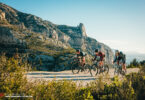When I looked at my phone for the first time after about 120 km, the other two women were about 10 and 15 kilometres ahead of me (but it could also be that my tracker had already stopped working). “That’s bad,” I thought. “15 km is a lot. That’s almost 45 minutes at my current average of 22 km/h.” At the same time, however, I was so at my limit that I couldn’t imagine pushing any harder. It was pretty much at that moment that I decided to forget the ranking and just ride for myself. To just give it my best shot and see how far I come.
Marion Dziwnik
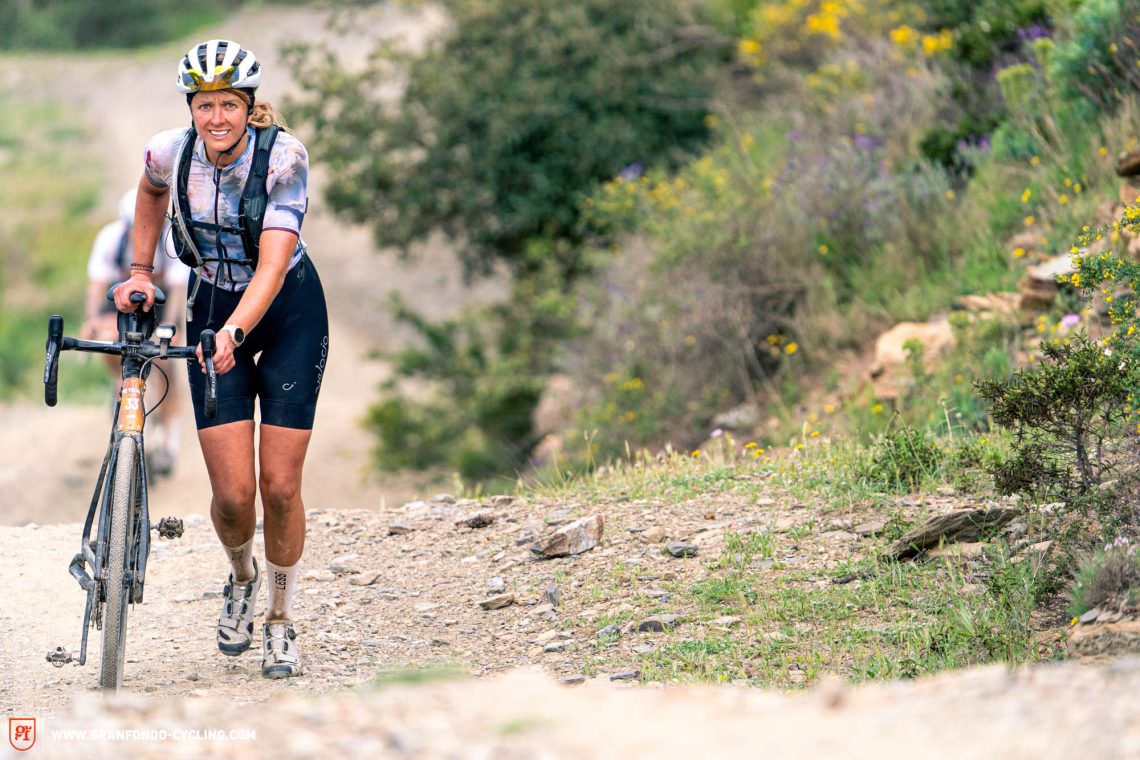
I was so at my limit that I couldn’t imagine pushing any harder.
This is how Marion Dziwnik felt after having completed a third of The Traka. Entering the race, she was one of the favourites after dominating the competition at Badlands last year. 240 kilometres later, she rolls over the finish line. Covered in swaths of gravel dust, sticking to the sweat on her face. There’s blood running down her arm, and she manages to crack a smile. She’s done it, she won in Girona, one of the gravel scene’s hottest events. Let’s look at what happened between her initial thoughts as she was three-quarters in and ultimately crossed the finish line in first place.
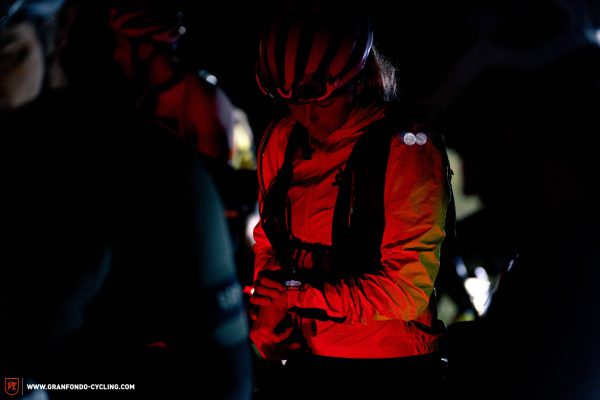

Let’s go back to the beginning, to the starting line of The Traka. The highly anticipated gravel race is hosted in the Spanish cycling capital of Girona. But for all two-wheel enthusiasts, Girona is about cycling first and foremost. Not just gravel, but all disciplines. Maybe this is the reason Girona is predestined for a race like The Traka.
360 kilometres, 5,000 metres in altitude: these are, in every sense, the hard facts of the two-day grave race. And as if that wasn’t enough, it’s very early in the season, at least for Central European conditions. However, for the likes of Marion Dziwnik, it signals the start of the race season. After dominating the competition at Badlands last year, she’s no longer considered an underdog. Yet she finds herself plagued with self-doubt at the start of the race, even if friends and acquaintances tip her for the win.
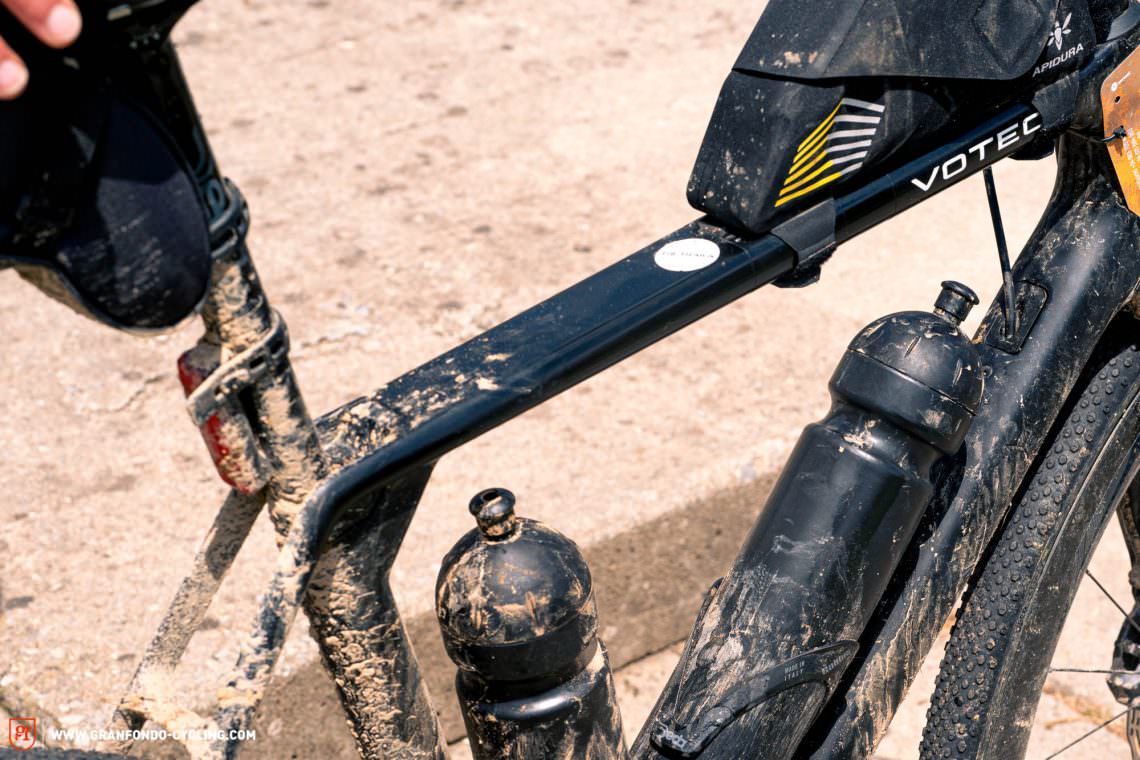
On the 30th of April, she’s at the start with her bike, the tracker and start number cable tied to it and the route coordinates on her GPS device. The 360-kilometre route of The Traka begins with two steep and punchy climbs. This is meant to spread out the field. On the one hand, it’s for safety, but above all for the experience. The route is mostly gravel roads, making up 80% of the route, with 5% being trails in the national park and 15% secondary roads. With the start taking place at 6 AM at the end of April, it’s quiet – nature is still asleep and on the first two climbs and the riders’ heavy breathing and rolling tires are among the only sounds.
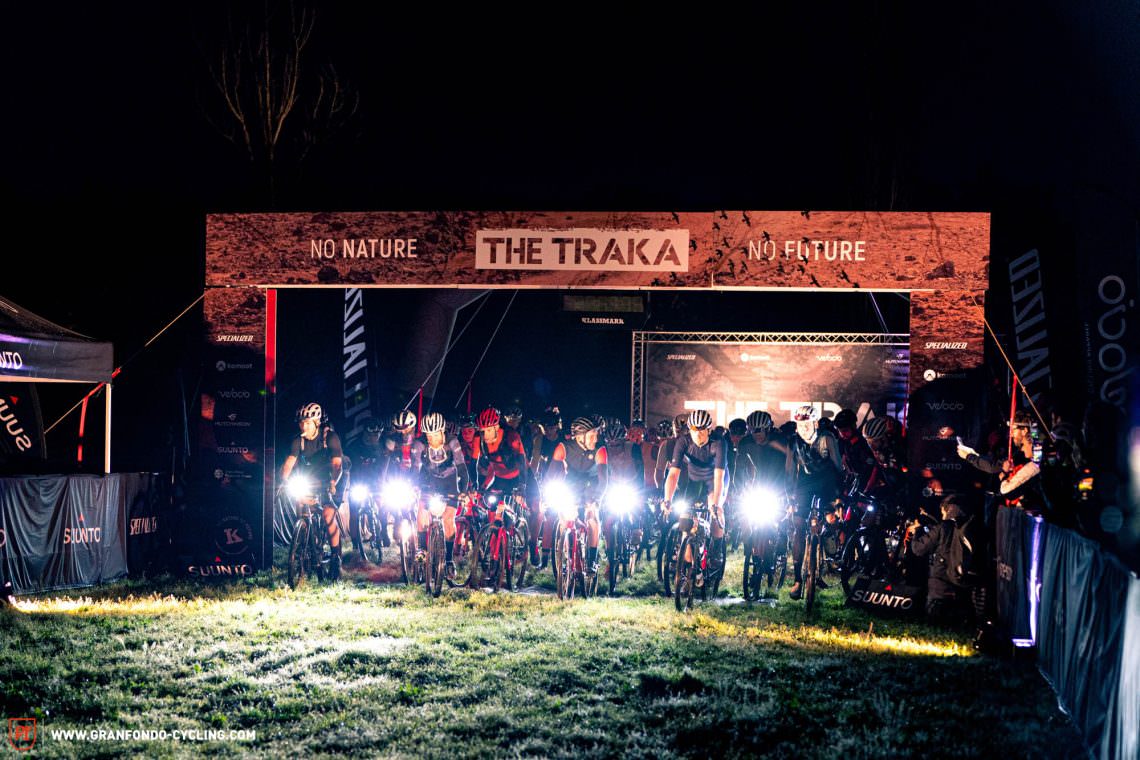
For me, it was the most dramatic bike race I’ve ever ridden.
For me, it was the most dramatic bike race I’ve ever ridden. There were moments when I was so tired, that I didn’t care about where I’d finish, and moments when I thought I wouldn’t finish at all.
Marion Dziwnik
The Traka can be divided into three parts. On the first 160 kilometres, you do over two-thirds of the total climbing. And it’s not one continuous push as you’ll find in the Alps, but along a punishing sawtooth patterned elevation profile. Although the highest point of the race is just under 500 m in altitude, the lowest is almost at sea level, so the riders are always either ascending or descending on this first section of the route. There’s hardly any chance for them to catch their breath, and it’s only on the climbs that they don’t always have to keep their wits about them. In contrast, the second part could almost be considered flat. The route passes through historic villages such as Castello d´Empuries and Pals all the way to Cruilles. Shortly before Pals, the profile gets a bit more jagged as the route enters the hilly terrain of the Costa Brava. However, the climbs are rather short and the goal here is to recuperate as much as possible for the final stretch. Here, it’s best for riders to just stick with the group.
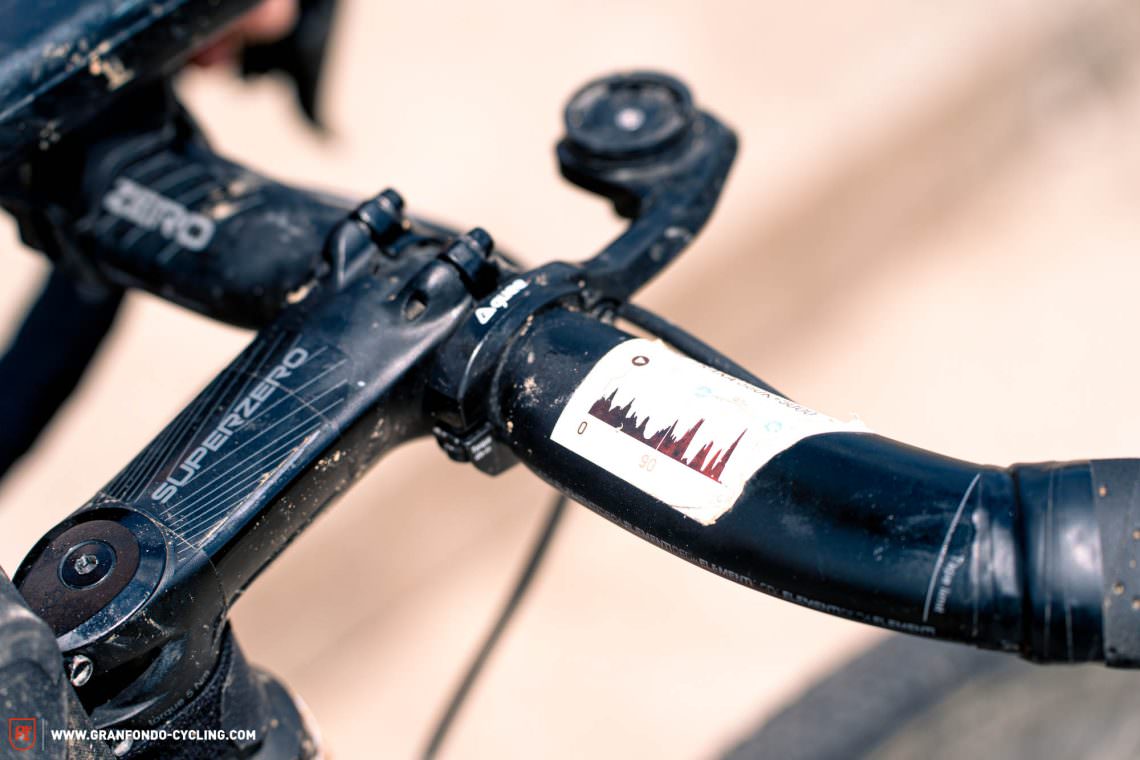
At the summit of the last ascent in the northern part, someone shouted that Virginia was just a few minutes ahead of me. “Really,” I wondered. “She was so far ahead of me just now. How amazing is this? I’ll catch her!” Suddenly, my ultra-distance legs were there, and I felt I could go on forever. I rode like an animal until I caught up with her at about the 200 km mark… and then I continued riding like an animal.
Marion Dziwnik
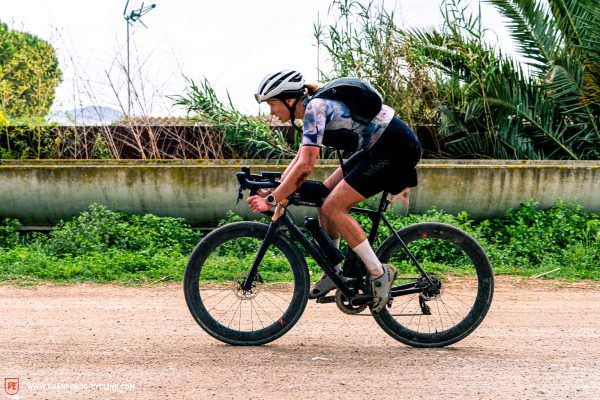
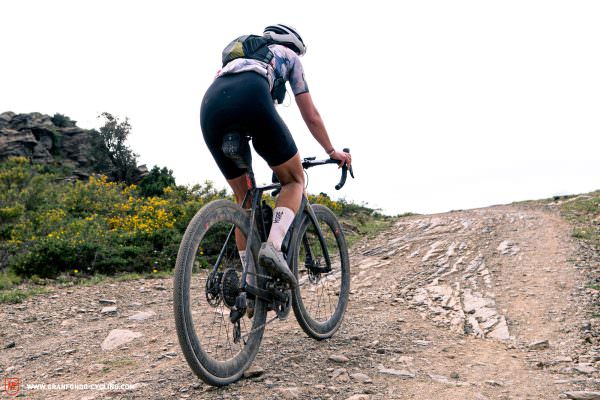
I rode like an animal… and then I continued riding like an animal.
From Cruïlles, after having done 270 kilometres, the route heads back into the mountains. These form part of the Les Gavarres massif and thus back into the old sawtooth patterned elevation profile. For all those who aren’t too tired to take in the scenery at this point, this is one of the most exciting sections of the race. The area around Cassà de la Selva is full of ancient Roman ruins, historic churches, and aqueducts and above all, it boasts quite impressive cork tree plantations. But to be honest, after 280 km in the saddle, the only thing riders are focusing on is pushing through to the finish. The last 80 kilometres remain hilly, although the climbs aren’t as long and demanding. It starts getting dark, food intake has a diminishing effect on the riders’ strength and their tunnel vision keeps getting narrower. Marion has already overtaken her rivals at this point, leading The Traka despite a crash that tore open her forearm. The encroaching darkness takes the riders even deeper into their own heads. And maybe that’s the biggest strength of good ultra-distance riders – to deal with this and maybe even draw strength from it.
The second half of the race went a lot better in terms of fitness. My legs were there and didn’t let me down. To be honest, that surprised me, because I didn’t have that many hours in the saddle before the start of the season. Luke, who helped me train for The Traka deliberately made me do rather short, intensive intervals instead of long sessions, which proved to be the perfect strategy to get me back into top shape as quickly as possible.
Marion Dziwnik
The last 80 kilometres go by – not quickly, but they go by. And Marion smiles after crossing the finish line, happy about the victory, but above all about the adventure she had. The photo at the finish tells a story of blood, sweat and tears – not quite martial but still adventurous. Then it’s time to catch up on some sleep before everyone meets again at the ice cream parlour in Girona on the following morning – like nothing happened.
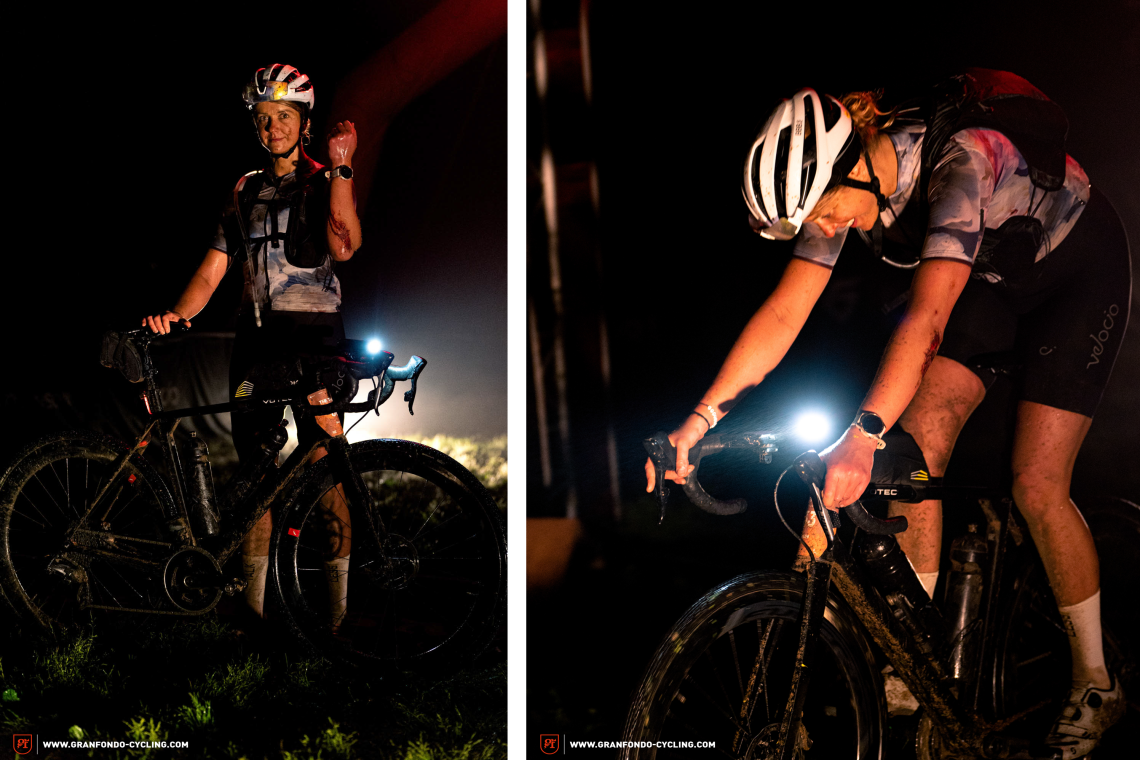
We asked Marion Dziwnik three quick questions about her gear for The Traka
1. Instead of the VRX gravel bike, you rode the VRC all-road bike – why?
The VRC is definitely the faster and more aggressive bike. Since I knew that The Traka would be a rather fast race, I chose the VRC. I rode the bike at the Orbit360 series last year, which had a similar variety of terrain.

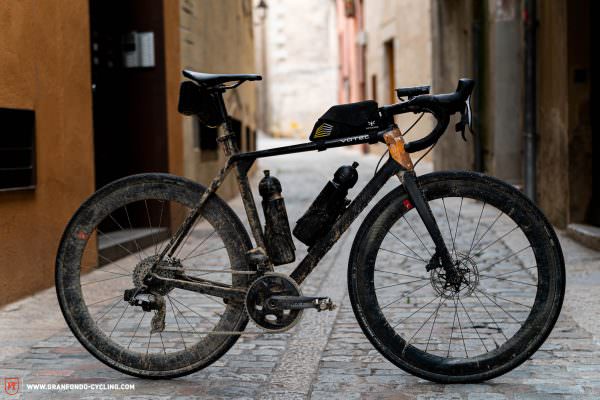
2. What do you look for on a bike?
Speed and sexy looks. I think VOTEC do that quite well. I also love the road bike feeling I have on my VOTEC bikes on gravel.
3. You didn’t have a repair kit with you, how did you try to avoid breakdowns?
I did have a repair kit (tubeless sealant, tube, tire plugs, tire levers, mini tool), but lost half of it on the way when my saddlebag opened by itself. From the moment I noticed that I obviously felt a bit tense, and I rode even more concentrated. Fortunately, it all went well.
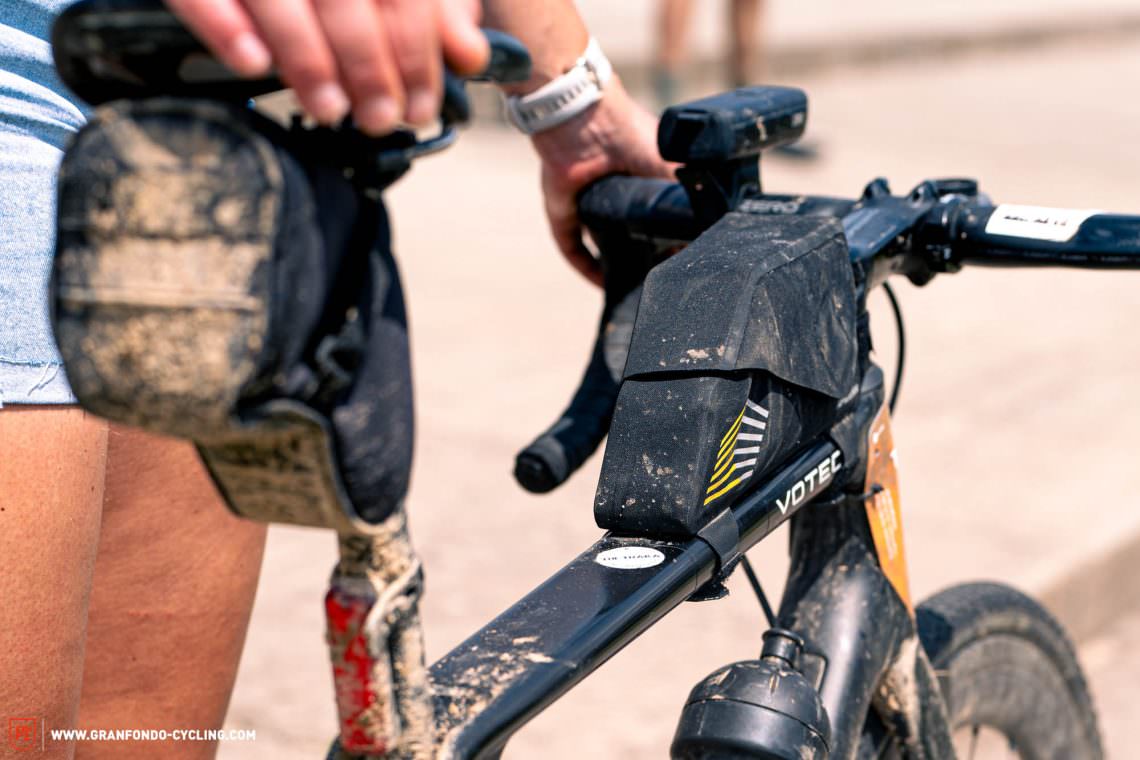
I crashed, lost all my tools, and the battery of my drivetrain was suddenly empty; I rode through a pothole, after which my handlebar had twisted and which I couldn’t straighten without tools. I couldn’t afford to make any more mistakes. A puncture would mean I’m out of the race. That was a highly nerve-wracking experience for me.
Marion Dziwnik
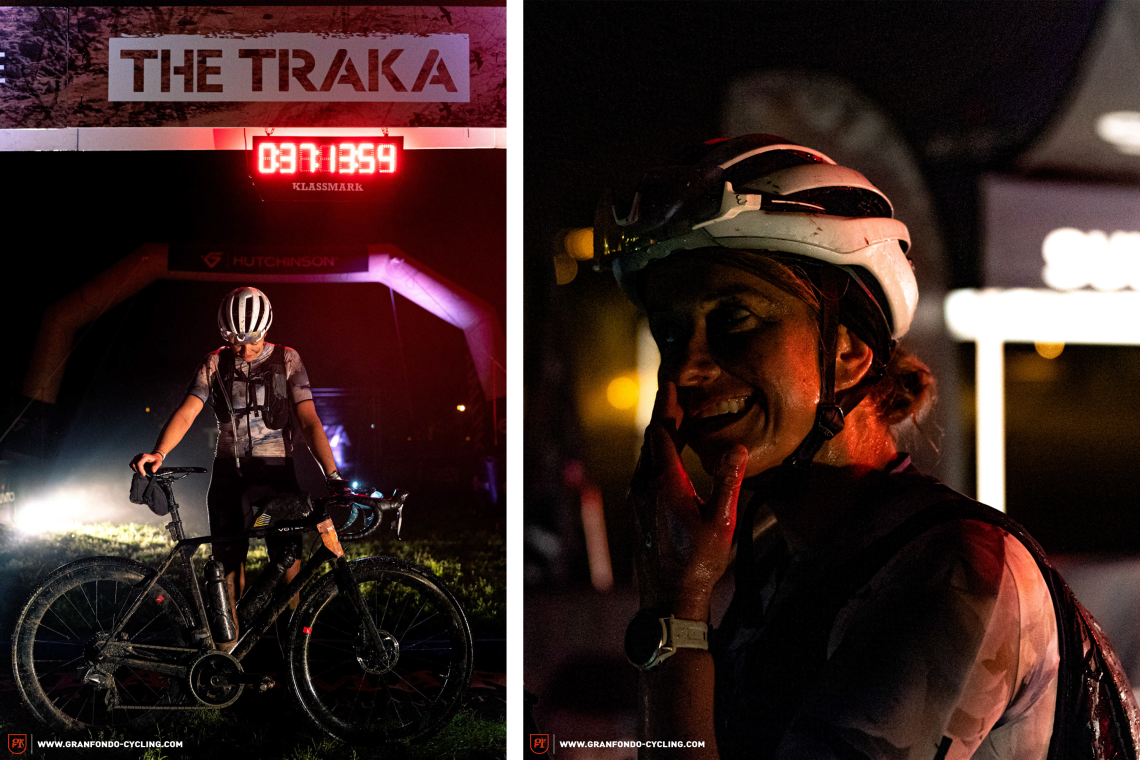
About Marion
Dr Marion Dziwnik won at Badlands in 2021 and is an expert in non-stop endurance racing. She is a Science Coordinator at the Fraunhofer research organisation. The Traka signalled the start of the season for her, and she has her sights firmly set on the 2022 Badlands. For The Track, she chose to ride the VOTEC VRC, the all-road bike in their portfolio, since she prefers the more aggressive setup. Her power and experience make up for the bike’s lack of comfort.
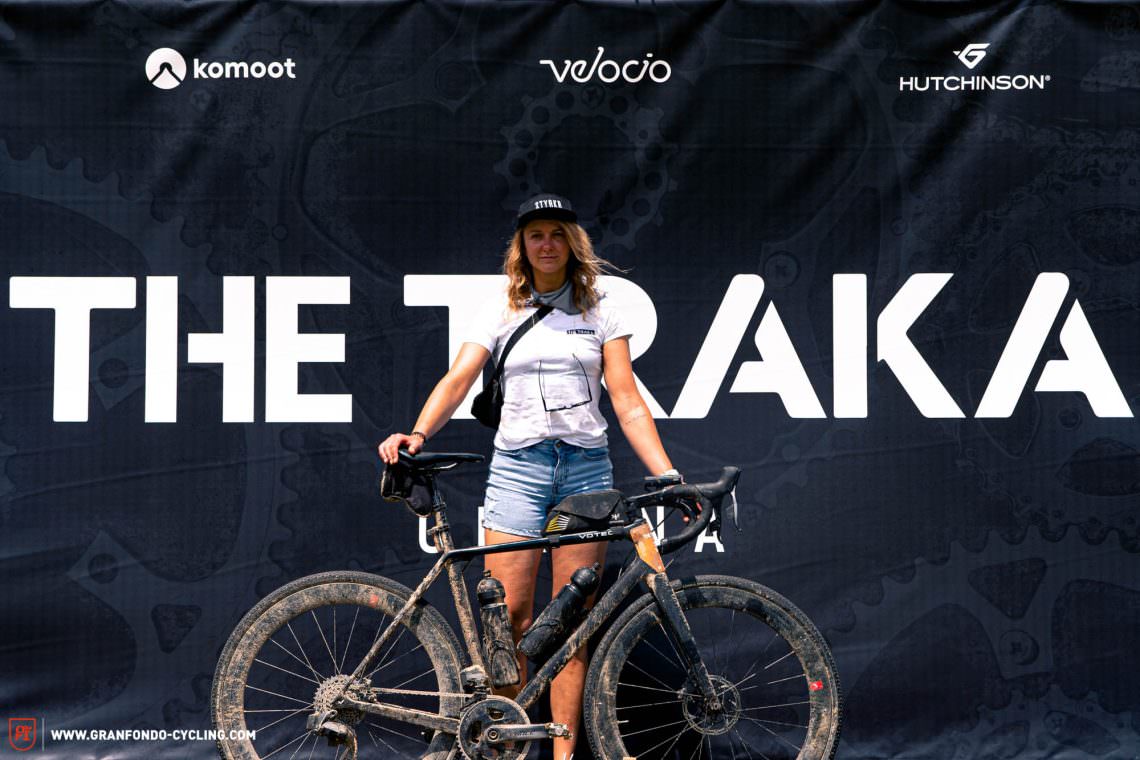
Fortunately, everything went well.
The Traka
The Traka is the most well-known gravel race on the calendar of Klassmark, an event agency responsible for organising numerous running and cycling events around Girona. For them, it’s all about the sustainable development of the region and the development of sustainable tourism. When organising events, they place a lot of importance on leaving a minimal footprint.
Did you enjoy this article? If so, we would be stoked if you decide to support us with a monthly contribution. By becoming a supporter of GRAN FONDO, you will help secure a sustainable future for high-quality cycling journalism. Click here to learn more.
Words: Norman Bielig Photos: Moritz Sauer







